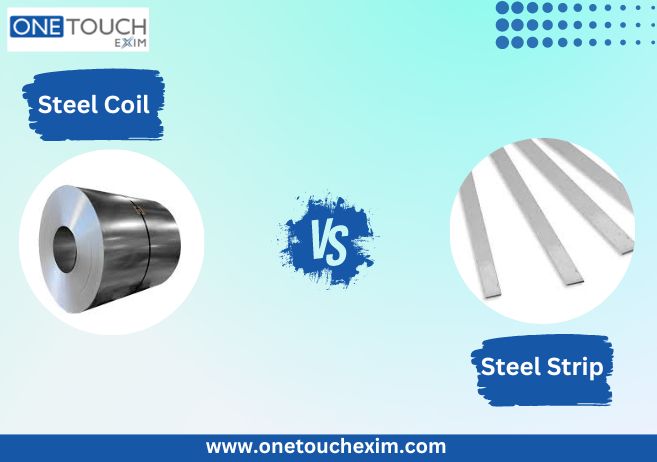Steel is the most frequently used material, with applications ranging from building to industry. It comes in a variety of forms and shapes. Steel coils and steel strips are used together but have distinct properties and purposes. In this Blog, we will compare and differentiate steel coils and steel strips.
Steel Coils
A steel coil is a long continuous sheet of steel that has been coiled into a coil form. It is available in a variety of thicknesses, widths, and lengths, with the breadth larger than the thickness. There are many procedures used by stainless steel manufacturers for making steel coils such as Hot-rolled, Cold Rolled, or Galvanised. They are stored and transported in large rolls to protect them from damage. Steel coils are made by heating a huge slab of steel and rolling it through rolling mills to thin it down and form it into a continuous sheet. This sheet is then twisted into a coil form to make handling, storage, and transportation easier.
Steel coils are often thicker and broader. They can range in width from a few inches to several feet and in thickness from a few millimetres to a few centimetres. Steel coils bigger dimensions make them suited for applications requiring broader surfaces and higher strength. Steel coils are more expensive due to their increased size and weight. Large sheets of steel need higher costs for manufacture and shipment.
Steel Strips
Steel strips are thin bits of steel that are typically cut from bigger steel coils or sheets. Typically, they are made by slicing broader coils into thinner strips. Steel strips are available in a variety of widths and thicknesses, and they are frequently employed for specialised applications requiring exact measurements.
Steel strips are created by a process known as slitting. This involves taking a larger stainless steel coil, sheet and plates and cutting it into narrower strips by using specialized machinery. Slitting enables the fabrication of steel strips with exact widths and thicknesses based on individual needs.
Steel strips are smaller in width and thinner in thickness than coils. Steel strips can range in width from a fraction of an inch to a few inches, with thickness measured in fractions of a millimetre or a few millimetres. The narrower dimensions of steel strips make them suitable for applications that demand precise dimensions and tight tolerances. Steel strips are narrower and thinner so they require less steel material and have lower production and transportation costs.
Steel Coils Applications and Uses
Because of their versatility and strength, steel coils are widely employed in a variety of sectors. They are utilised in situations that demand bigger amounts of steel or the strength and durability of a whole sheet. Here are some popular applications for steel coils.
The Automobile Industry
Steel coils are used in the automobile industry to make components like panels, chassis, and body pieces. Steel coil durability and formability make them excellent for creating strong and safe cars.
Construction
Steel coils are used in the construction sector for structural applications, such as the manufacture of beams, columns, and roofing materials. They provide structures and infrastructure projects strength and stability.
Manufacturing
Steel coils are used as raw materials in the production of a wide range of items, including appliances, furniture, pipelines, and containers. Steel’s adaptability allows it to be bent and moulded into a variety of forms to satisfy specific needs.
Steel Strip Applications and Uses
Steel strips are utilised in specialised applications that need exact dimensions and qualities. They are utilised in situations that need less steel or where exact dimensions and qualities are required. Here are some common applications for steel strips:
Electrical and electronic engineering
Steel strips are used to make electrical components such as transformers, motors, and inductors. They are suited for various applications due to their unique size and magnetic characteristics.
Precision Engineering
Industries such as aircraft, medical equipment, and instrumentation require steel strips for precision part fabrication. These strips are utilised in applications that need tight tolerances and precise measurements.
Automotive Components
Steel strips are used in the automobile sector to make minor components such as springs, clamps, and brackets. The narrow dimensions of steel strips allow for efficient manufacturing of these parts.
Conclusion
In conclusion, steel coils and steel strips are both essential types of steel, although they differ in size, manufacturing techniques, and uses. Steel coils are continuous sheets that have been rolled into coils and are widely used in sectors such as automotive, construction, and manufacturing. Steel strips, on the other hand, are narrower and thinner, frequently cut from bigger coils, and are used for specialised applications requiring specific dimensions and qualities. The difference between steel coils and steel strips aids in the selection of suitable steel forms for diverse purposes, providing optimal performance and cost-effectiveness in a variety of sectors.
